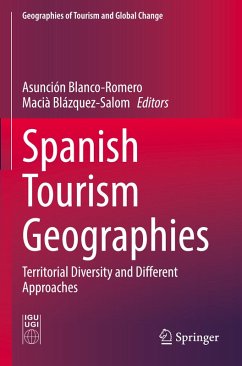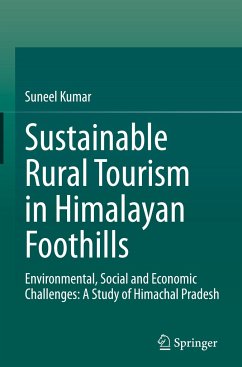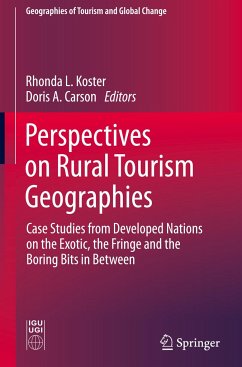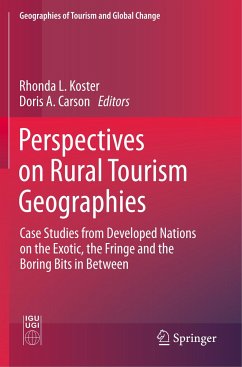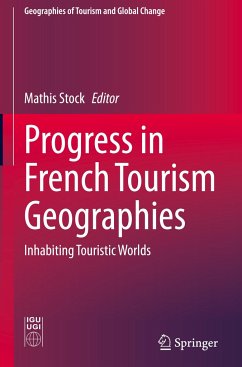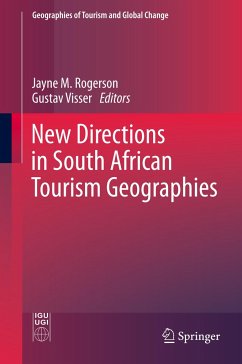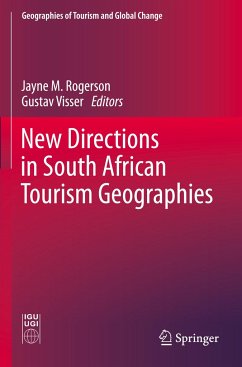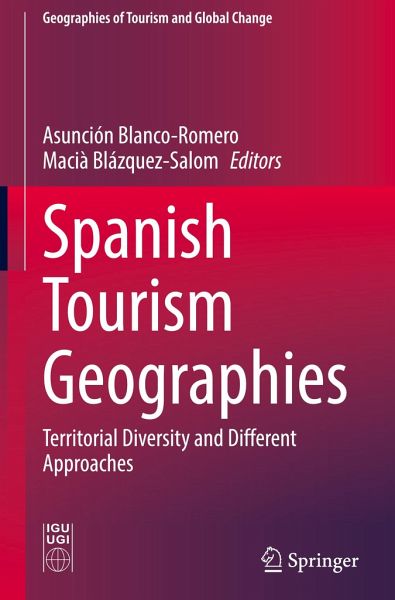
Spanish Tourism Geographies
Territorial Diversity and Different Approaches
Herausgegeben: Blanco-Romero, Asunción; Blázquez-Salom, Macià

PAYBACK Punkte
57 °P sammeln!
This book provides an overview of the progress in Spanish tourism geography, particularly after the overlay of financial, pandemic and climate crisis, by the scrutiny of the different geographical areas and variables of analysis. It shows the diversity of geographical environments and their varied relationship with tourism, from the emptied inland regions to urban heritage in historic centres to coastal resorts. The book also introduces the analysis of the most important variables when studying the implications of Spanish tourist specialization. How are the beaches with intensive tourist use m...
This book provides an overview of the progress in Spanish tourism geography, particularly after the overlay of financial, pandemic and climate crisis, by the scrutiny of the different geographical areas and variables of analysis. It shows the diversity of geographical environments and their varied relationship with tourism, from the emptied inland regions to urban heritage in historic centres to coastal resorts. The book also introduces the analysis of the most important variables when studying the implications of Spanish tourist specialization. How are the beaches with intensive tourist use managed? What socio-spatial processes do leisure-rooted migrations involve? What are the labour conditions in the Spanish tourism industry? How does saving water boost tourism growth? The book offers answers through a methodological specificity of Spanish geography, which is highly oriented towards the analysis of public policies and even the proposal of new planning and methodology formulas that go beyond diagnostic studies.
The domestic perspective, or that of insiders, of these scientists residing in Spain bestows them with special codes for conducting interpretations and analyses based on their everyday proximity to a territory characterised by its intense touristification. The tourism and real estate specialisation that Spanish society, together with its territory and institutions, have forged since the beginning of "developmentalism" permeates this scientific analysis.
By providing a strong conceptual and empirical portrait, this book is a great resource for students and scholars in geography of tourism, as well as for social scientists and policy makers.
The domestic perspective, or that of insiders, of these scientists residing in Spain bestows them with special codes for conducting interpretations and analyses based on their everyday proximity to a territory characterised by its intense touristification. The tourism and real estate specialisation that Spanish society, together with its territory and institutions, have forged since the beginning of "developmentalism" permeates this scientific analysis.
By providing a strong conceptual and empirical portrait, this book is a great resource for students and scholars in geography of tourism, as well as for social scientists and policy makers.





